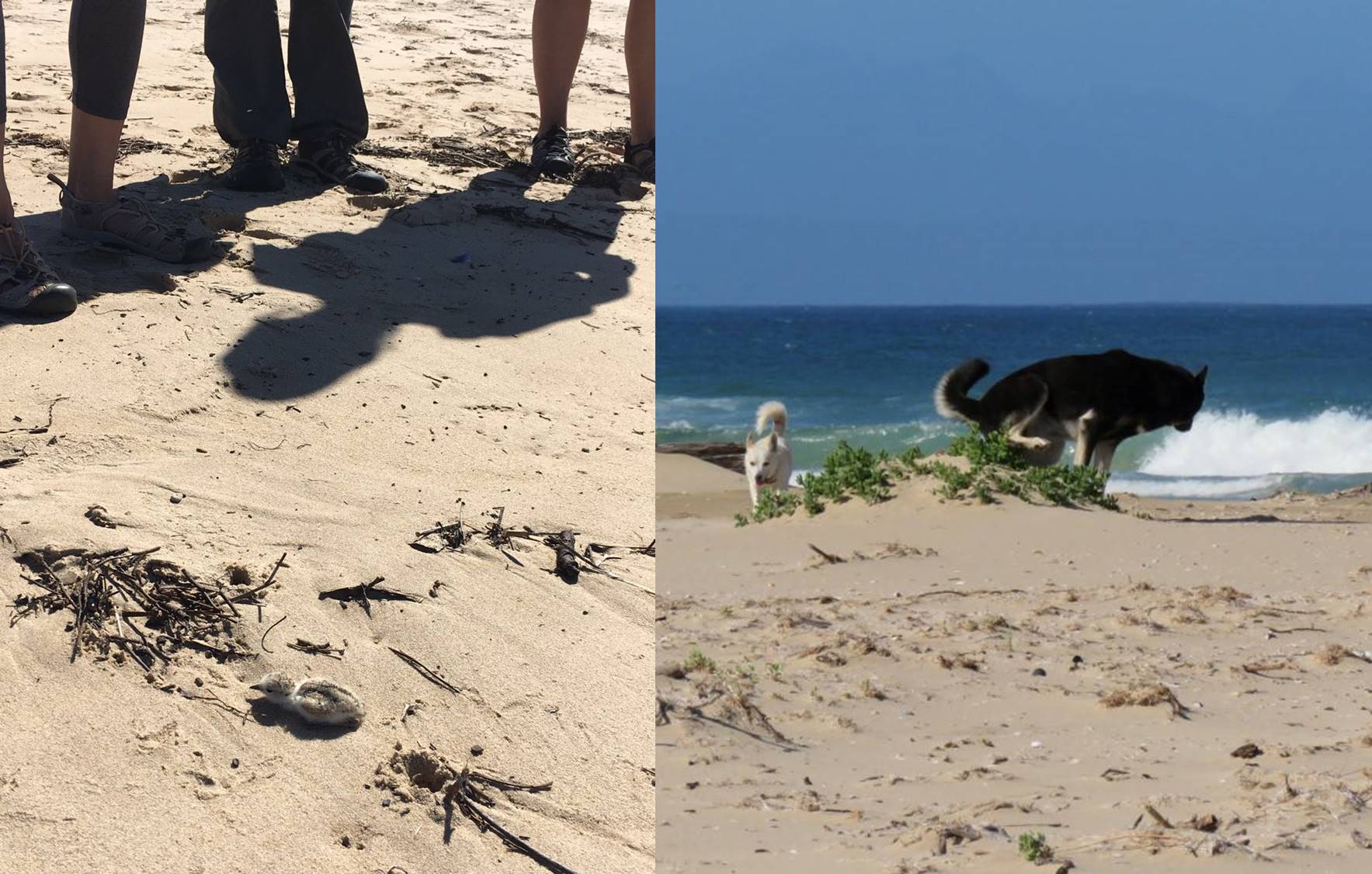by Brittany Arendse

September saw our third White-fronted Plover breeding season take flight as part of our Coastal Impact Programme. The previous season’s stats painted quite a dreary picture, with less than 10% of the breeding attempts actually yielding successful fledglings. White-fronted Plovers are very inconspicuous shore-nesting birds. They have very effective camouflage that aids with predatory defence but this can also be a detrimental trait. This is especially true in amply populated areas where beach use is high, as most beach visitors don’t even realise they are there!

Our observational data suggest that White-fronted Plovers recognise danger approaching about 30m away from their nest (long before we notice them), at which point they get ready to duck out. On a bad day, leaving the eggs or hatchlings unattended can mean death by predators (this includes dogs), trampling, or boiled eggs in the hot sun-baked sand. It takes only about 5 minutes for a plover egg to overheat – that’s why it’s best to stay out of territories and avoid lingering.

Dogs off leashes are often the culprits for scaring parents off the nests and leaving the young open to attack by natural predators, that is if Fido doesn’t use them as a toy or welcome mid-morning snack himself first. Chicks also have a “stop and freeze” reaction to threats. This mechanism is initiated by a whistle from the parents, at which point they drop to the ground and freeze – not moving a feather until mom says the coast is clear. They literally disappear against the sandy background – this is good against predators but they stand no chance against a boot and are sometimes literally trampled to death…

This season we will be implementing our #ShareTheShores campaign to educate beach users on our feathered friends and how to share our beaches with them. The overarching message is not to exclude anyone but to enable visitors to use our beaches more responsibly with regard to coastal habitats, their animals and our ability to co-exist with beach biodiversity.
You will find our conservation team on Lookout Beach as well as Nature’s Valley handing out pamphlets (Shore-nesting-birds.pdf) and ready to have a chat about the work we do. We are also doing our standard nest monitoring and will be implementing nest signs at least 30m away from nests that will serve as reference points, beyond which walking should be avoided. It is best to keep dogs on leashes and walk on the wet sand line to ensure that all our shorebirds can nest and thrive on our beaches.

Let’s work together and #ShareTheShores.



